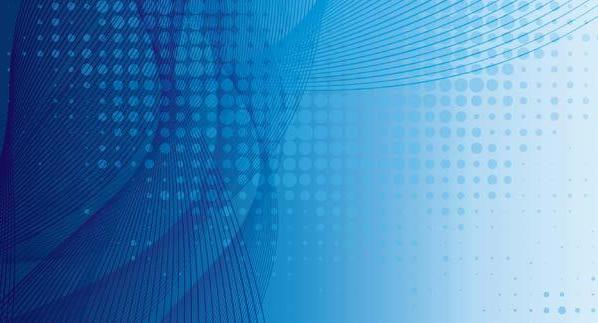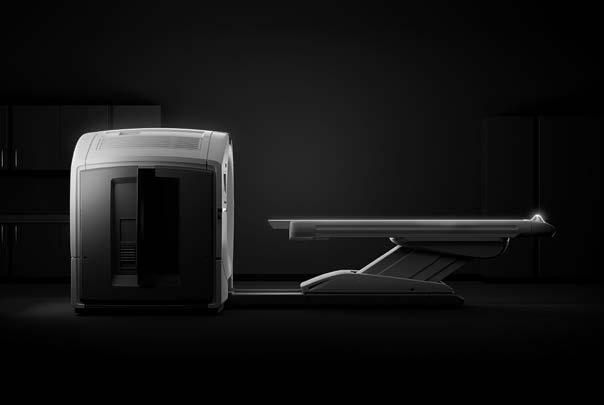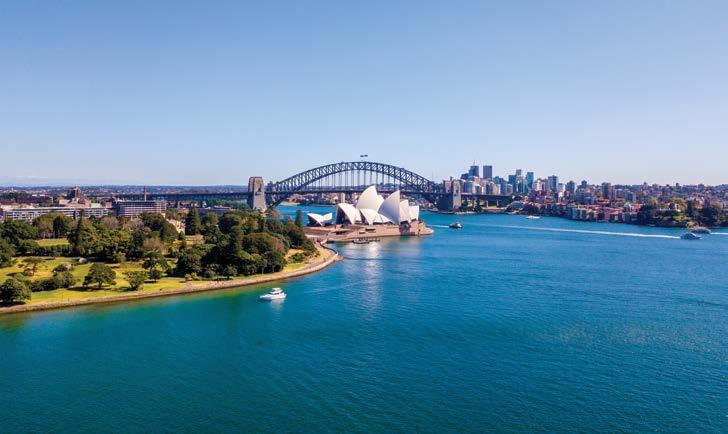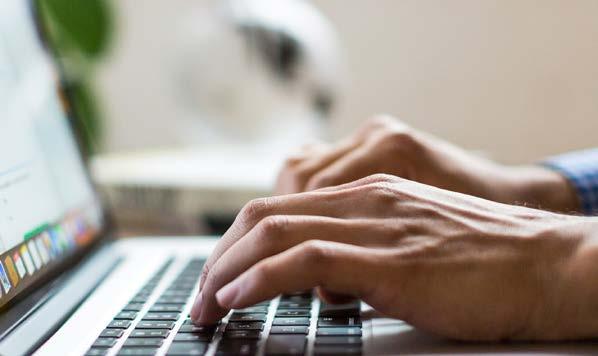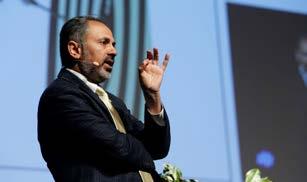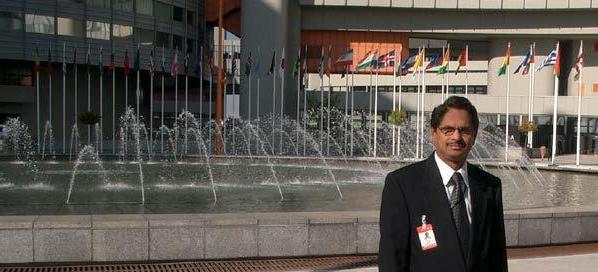
5 minute read
Technical Standards Article
from Gamma Gazette Winter Edition 2020 - The Australian and New Zealand Society of Nuclear Medicine
by ANZSNM
Author: Darin O'Keeffe, Christchurch Hospital, New Zealand
Working in nuclear medicine, we are well aware of the importance of radiation safety: justification, optimisation, limitation; the basic principles of distance, time, shielding, containment and control, etc. These are all well-established principles and procedures. So how could a stronger radiation safety culture improve safety and what would it look like in medicine? The International Atomic Energy Agency (IAEA) took on the challenge of this question by looking at safety in a number of industries, including nuclear and aviation, and they came up with 10 common traits that are essential for a strong radiation safety culture. Notice that I said “a strong radiation safety culture”. The IAEA Human Health Programme originates from one of the articles of their United Nations Statute that says they must “accelerate and enlarge the contribution of atomic energy to peace, health and prosperity throughout the world”. So they are mandated to promote radiation safety and that is what they have focussed on with these 10 common traits. But I wonder whether it could be extended to one safety culture for radiation safety, occupational safety, and patient safety in medicine. That has yet to be determined, but I think it is worth exploring as the programme unfolds.
The 10 common traits are personal accountability, questioning attitude, effective safety communication, leadership safety values and actions, decision-making, respectful work environment, continuous learning, problem identification and resolution, environment for raising concerns, and work processes. Why 10? I personally think it probably could have been 9, but 10 fits nicely with the other IAEA programmes such as “10 Pearls: Radiation protection of patients in CT” and “10 Pearls: Radiation Protection of Patients in Fluoroscopy”. The IAEA have developed a ‘trait talks’ training programme for this safety culture based on work done by the US Nuclear Regulatory Commission and engaging an adult education specialist. The result is a programme designed to train a maximum of around 25 people at a time using a combination of a brief introductory lecture, a scenario to study and discuss as a group, and finishing with a visual digital presentation (because that’s what most of us adults
Presentation of my bronze medal by Juan Carlos Lentijo, Deputy Director of the IAEA and Head of the Department of Nuclear Safety and Security.
In March last year the International Atomic Energy Agency (IAEA) launched a competition entitled “Towards a Strong Radiation Safety Culture in Medicine” that was designed to generate the 3 minute digital presentations. The top three participants received a travel grant to present their digital projects at the IAEA in Vienna at the launch of the training. I thought that sounded like a great opportunity like), and a final group discussion about the trait.
so I entered. It was much more challenging than I expected and I almost gave up trying, but with some acting assistance of staff from the Nuclear Medicine Department and Medical Physics & Bioengineering at Christchurch Hospital (thanks!), I pieced together a home movie quality submission. Very much to my surprise, I got third place in the competition and offered a paid trip to Vienna. But there was a catch: the training package had not been completed and was not going to be launched at this meeting. Instead we were asked to present our projects at a consultancy meeting, be presented our place medal, and then lead an hour long session on our trait, trialling the training material. It sounded more like hard work than a fun expenses paid trip to Vienna. And it was; three and a half days of work but a great opportunity to interact with some experts in radiation safety and representatives of major organisation such as the IAEA, WHO, European Society of Radiology, and many others.
Technical Standards Article
competition (Continued)
The training programme was meant to be launched at an IAEA meeting in Seoul at the end of May, but COVID-19 put an end to that. So we await the official launch. If you have an opportunity to be part of the training programme, take it. Many of the scenarios discussed are outside of nuclear medicine, but they are eye-openers and very educational.
One of the classic wooden panel rooms of the Vienna International Centre. Luis de los Santos (AAPM) giving a very dynamic and interactive presentation as an example of training as part of the radiation safety culture programme.
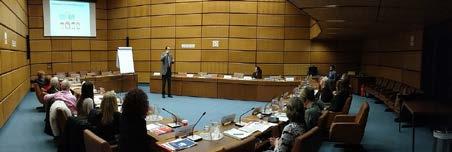
On a personal note, this was my first time in Vienna and Austria. The consultancy meeting was held in the Vienna International Centre (VIC), home to the IAEA and a major branch of the United Nations. Security was tight getting into the facility but once inside you could roam pretty freely from building to building. The VIC was a truly multi-national facility and going to the main eatery was an experience on its own – the size of a major shopping mall food court, cheap prices, an amazing selection of food, and I've never seen so many suits in one place at one time!
The only thing I would say missing from the consultancy meeting was the lack of a social function – you only really got to chat with others at the breaks. However, I managed to entertain myself with a brief look around Vienna in the evenings and on the last day before I flew out that night. A nice city and very easy and cheap to travel around using public transport and a 7 day travel card. I’ll go back if I have an opportunity.
Darin O’Keeffe, MANZSNM Christchurch Hospital, New Zealand
During a lunchbreak I took the opportunity to catch some sunlight to help get over the jetlag. The cool breeze was not as regular as this photos suggests: 30 photos later I managed to capture the NZ flag in its full glory! The Vienna International Centre has a number of gifted artworks throughout the facility, including a number fascinating pieces in the main courtyard area. This one was titled "Woman Free".
EduTrace is proudly sponsored by GMS, Global Medical Solutions
EDUTRACE
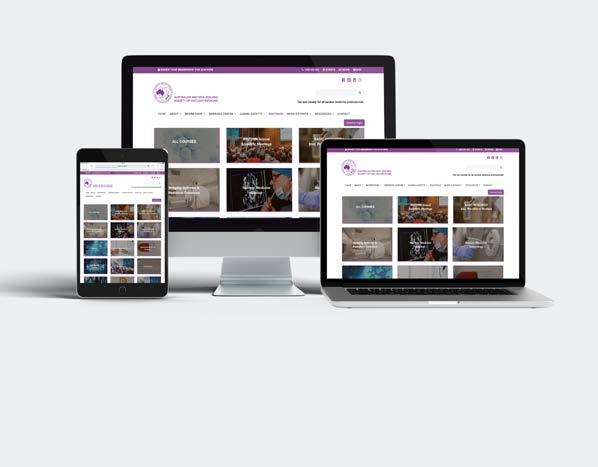
YOUR CPD E-LEARNING PORTAL
* Exclusive to ANZSNM members
EDUTRACE PROVIDES ACCESS TO A WIDE RANGE OF COURSES ON-DEMAND TO ADD TO YOUR CPD CONTINUING EDUCATION
The content includes proprietary programs as well as others shared by international imaging and therapy organisations with which the ANZSNM has developed excellent relationships over the past 50 years
Resources including webinars, case studies and online seminars Contributions from local and world experts National and overseas industry conference presentations and webinars Access from any device, anywhere at any time. Integration of CPD points with Attendo Plus mobile app
